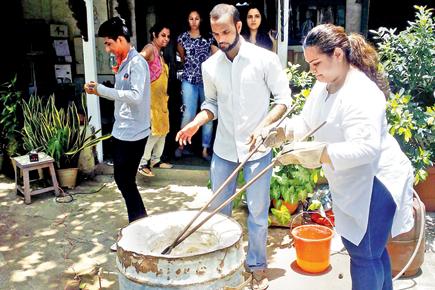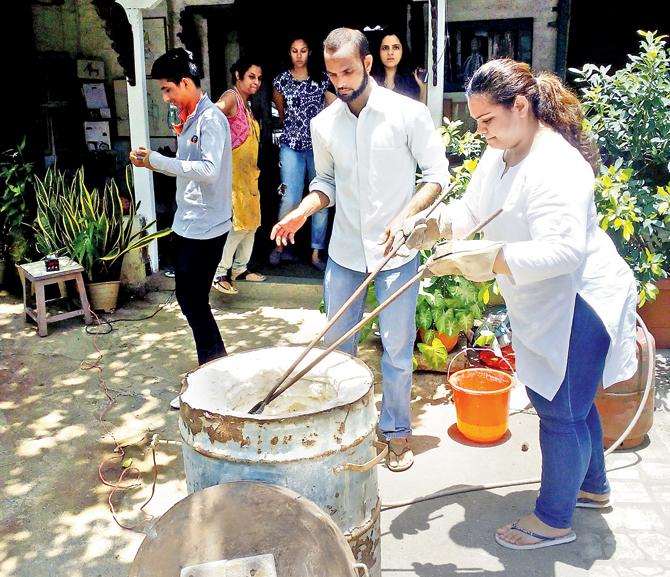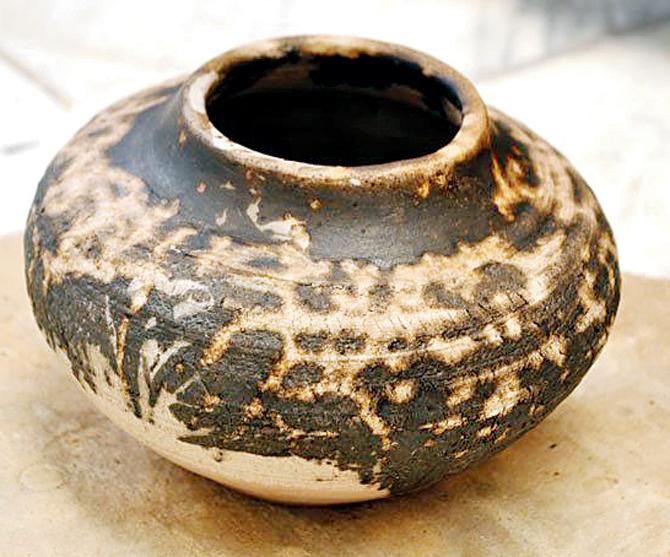Learn an ancient and unusual firing technique to create Obvara pottery at a workshop over two weekends


Potter Hanif Galwani (centre) at an earliar workshop
ADVERTISEMENT
OBVARA firing is believed to have originated in Eastern Europe in the 12th century. The technique, which involves scalding the finish on the pottery, was originally used to seal the clay. Today, it is popular owing to the beautiful crackled effect it creates on the surface. If you’d like to learn how to create your own Obvara-fired pots, sign up for a two-day workshop at Space118, which will be conducted by potter Hanif Galwani.
Galwani, who hails from a family of traditional potters, says that the Obvara technique is similar to the Raku process, the difference being that the pot is dipped into an Obvara solution before quickly being dunked in water to cool it. “First, you need to fire a bisqued pot to around 900°C. When its almost completely cooled, cover it in a solution made using flour, yeast, sugar and water. It dries quickly, leaving the surface with a lovely scalded effect,” says Galwani.
The advantage is that there is no smoke produced with this technique, so it can be tried without any hassle in a space-starved city like Mumbai.

The Obvara technique involves scalding the finish on the pottery in order to seal it
On the first day of the workshop, participants will be given an introduction to the technique, after which they will learn basic wheelwork. On the second day, the clay articles will be fired.
“I’m a seventh-generation potter. My family hails from Kutch, but my grandfather moved to Kumbharwada in Dharavi in 1926,” says Galwani. However, he is the first in the family to study more about pottery, moving to Puducherry to apprentice under Rey Meeker and Deborah Smith of Golden Bridge Pottery in 2007. “Seven months later, I returned and opened my own studio at Kumbharwada,” he adds. He now also has a second studio in Kutch, while his brother helps him run the one in Mumbai.
 Subscribe today by clicking the link and stay updated with the latest news!" Click here!
Subscribe today by clicking the link and stay updated with the latest news!" Click here!






